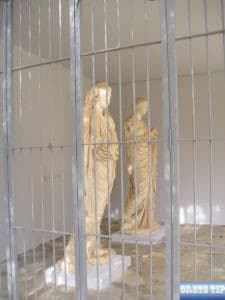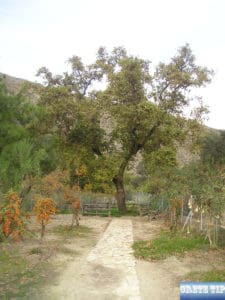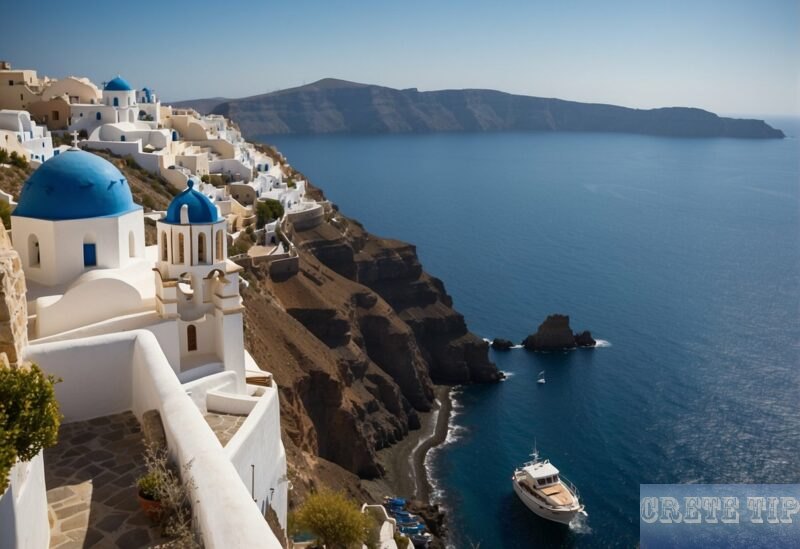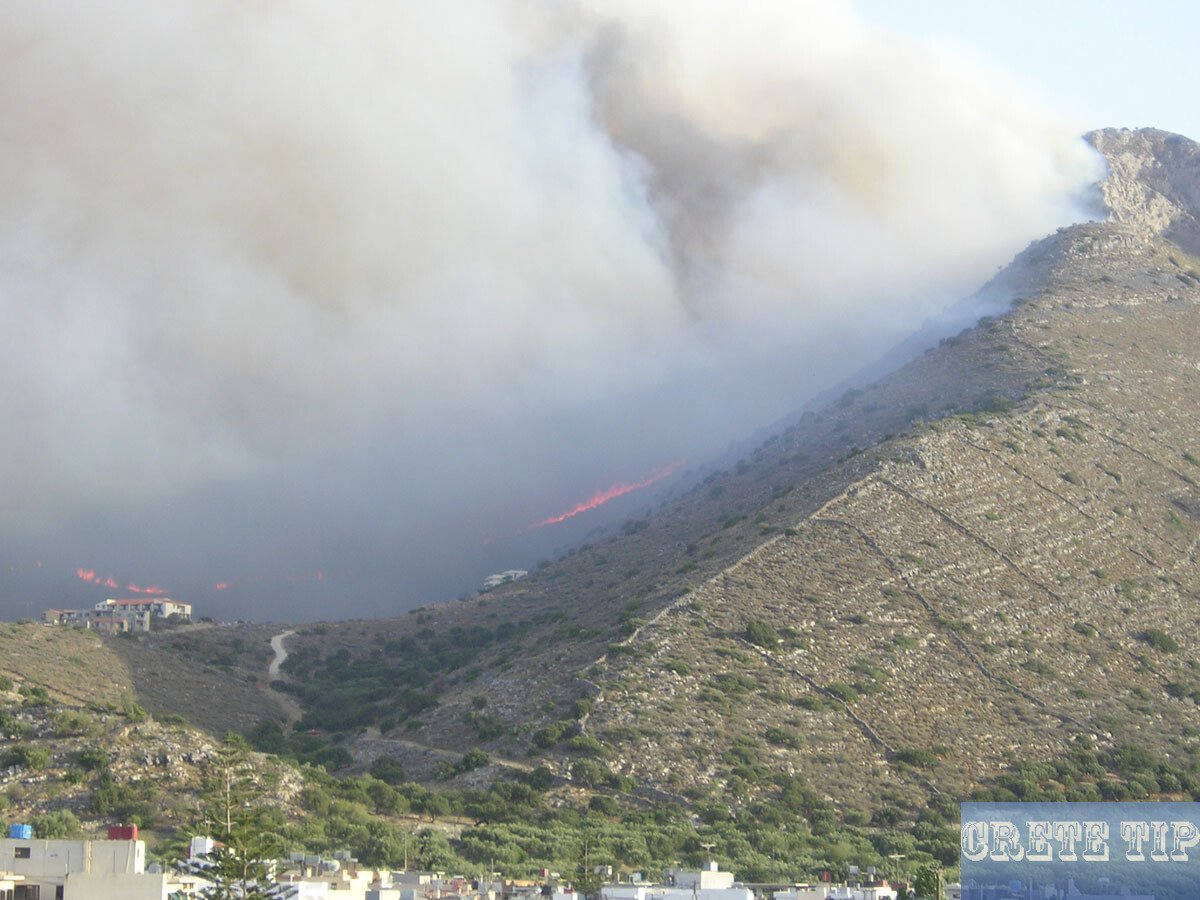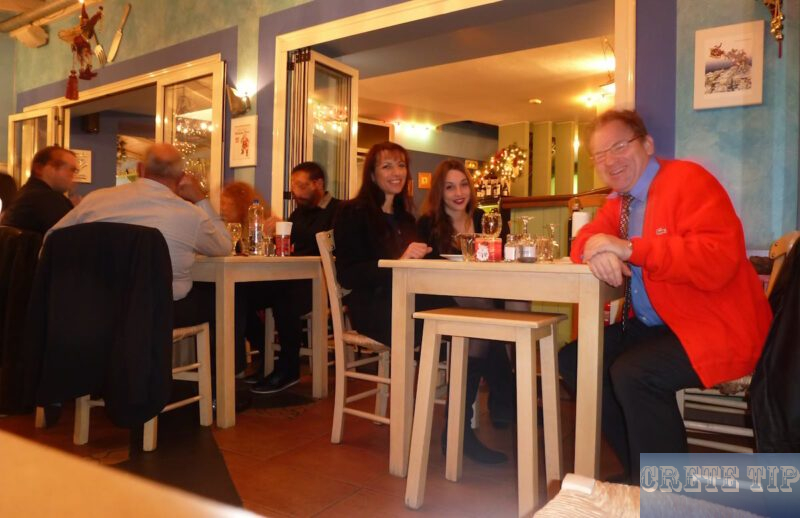Gortys, the destroyed Roman city on Crete.
The provincial capital was never rebuilt after the destruction by the Saracens and the ruins are in the state they were in 1,200 years ago.
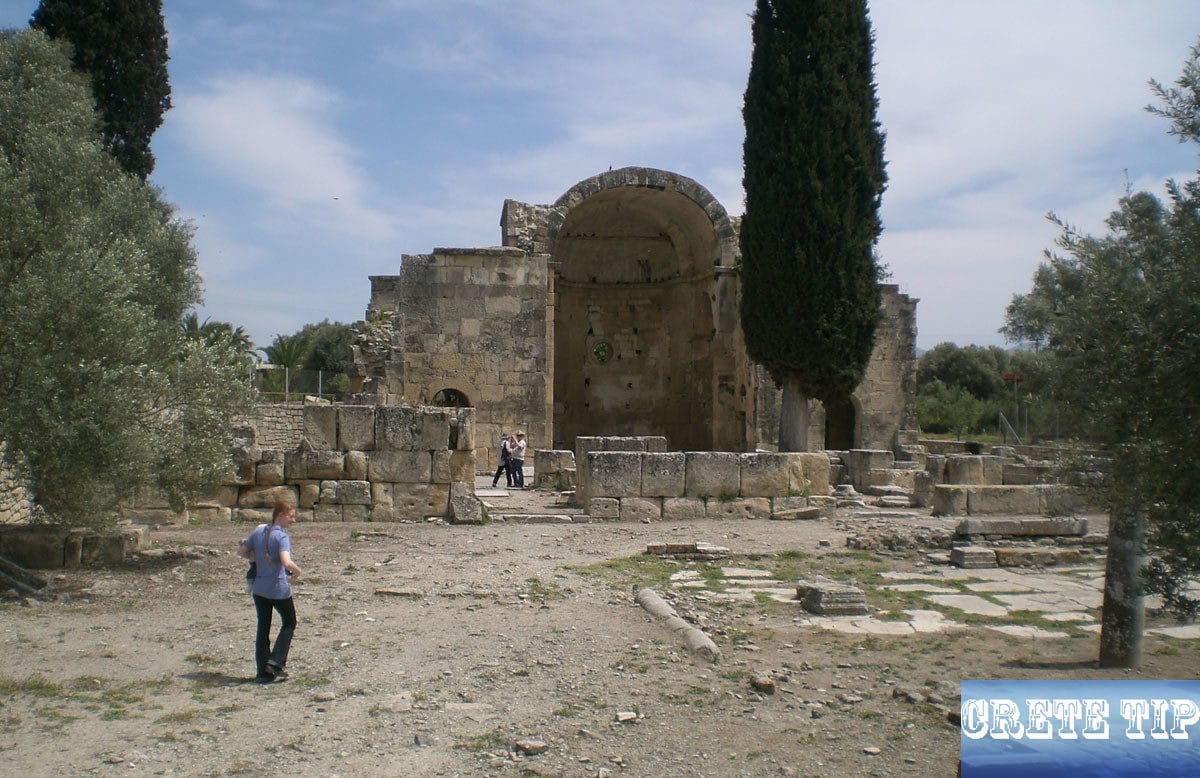
Destroyed Roman provincial capital Gortys
Gortys was one of the most important cities on Crete until its complete destruction by the Saracens in 823-827. The city was laid out on both sides of the river Lithaios and existed since the Minoan period. At first Gortys did not play an important role, but is mentioned by Homer and Pausanias.
History of Gortys
In the 8th century BC Gortys became an important economic metropolis under the rule of the Dorians. Gortys finally conquered its former ruler Festos and thus became the most important city in the Mesara plain with the two ports in Levina and Matala. During the Hellenistic period, it already had good relations with the Ptolemies.
The population was divided into three rigorous castes: citizens (mainly Dorians) ruled over the class of the serfs (predominantly the former ‘Minoan’ Cretans) and slaves on the lowest hierarchy. However, life itself was as hard for citizens as in classical Sparta.
Testimonies are provided by the preserved, impressive city rights, which were found there and which already regarded by the Romans as a preserved antiquity. There are also contracts between Gortys and the rivals, especially Knossos, from this age.
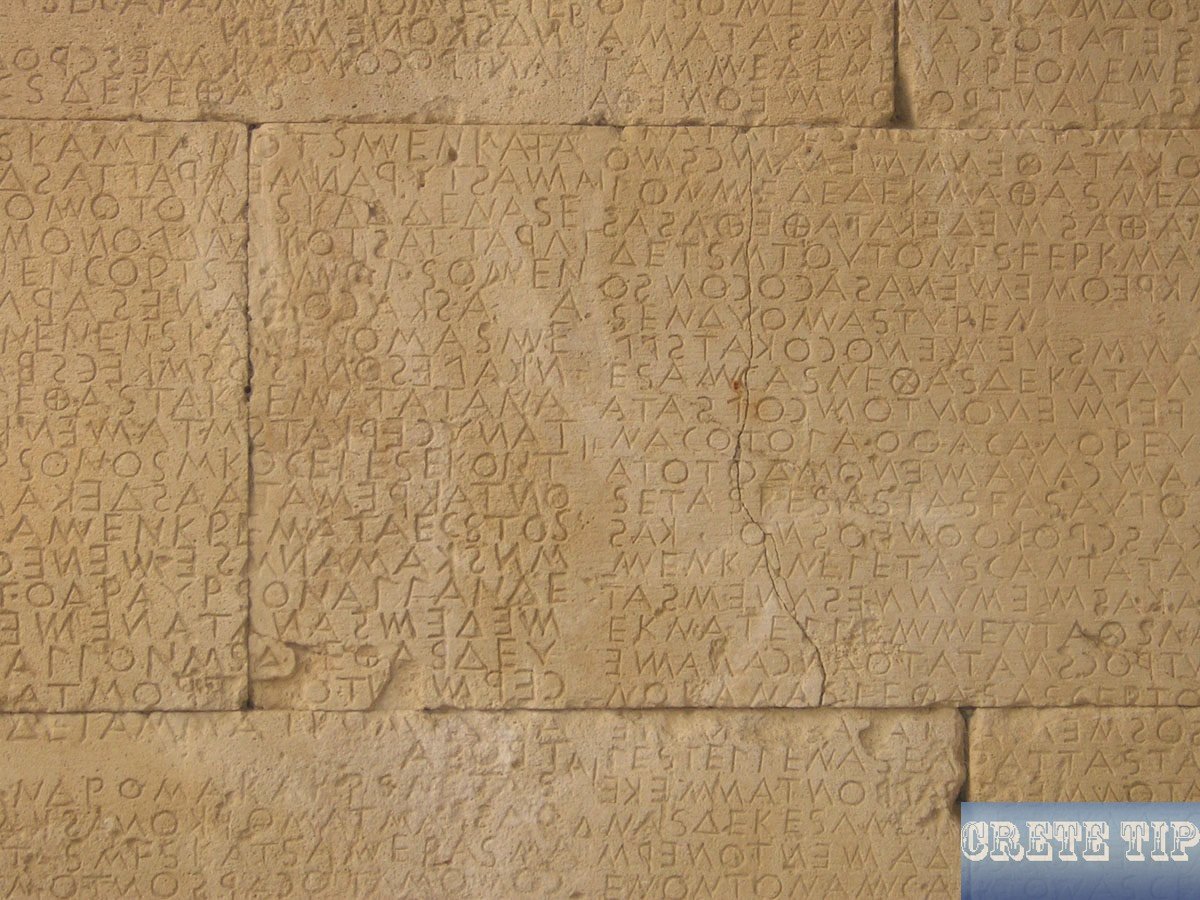
Later Hannibal fled to here after his defeat by the Romans, where he could temporarily stay.
Gortys later helped the Romans in the conquest of all Crete and under Roman rule the city reached in 67 BC its climax when it became the seat of the Roman Prefect of the Composite Province of Crete and the Cyrenaica in North Africa.
Christianity reached Crete first in this place, when Titos was left behind to Christianize the Cretans by St Paul on his way to Rome. St Titos became the first bishop of Crete.
Around 200 BC the city of Gortys received a city wall. Following the invasion of the Saracens at Matala and the siege of 823 to 827, the city was completely destroyed and abandoned, leaving only a bishop’s seat after the later expulsion of the Saracens.
Since the city was never rebuilt anymore, the ruins – most of which have only been excavated to a small extent – are still largely in the state of their destruction some 1,200 years ago.
Visit of Gortys
The remains of the ancient city of Gortys are spread over a large area and lie to the right and left hand of the road. The hitherto excavated or still visible parts comprise a much larger and still impressive area, as the small, fenced-in area on the street from the village Ayii Dehka, which most visitors only get to see.
There is an entrance fee for the fenced area, all other parts are free and accessible at all times. The opening hours of the fenced area are daily from 8 am to 8 pm in July and August; in April to June, and September and October from Monday to Saturday from 8 am to 4 pm and on Sundays from 8 am to 3 pm. In all other months from 8 am to 3 pm.
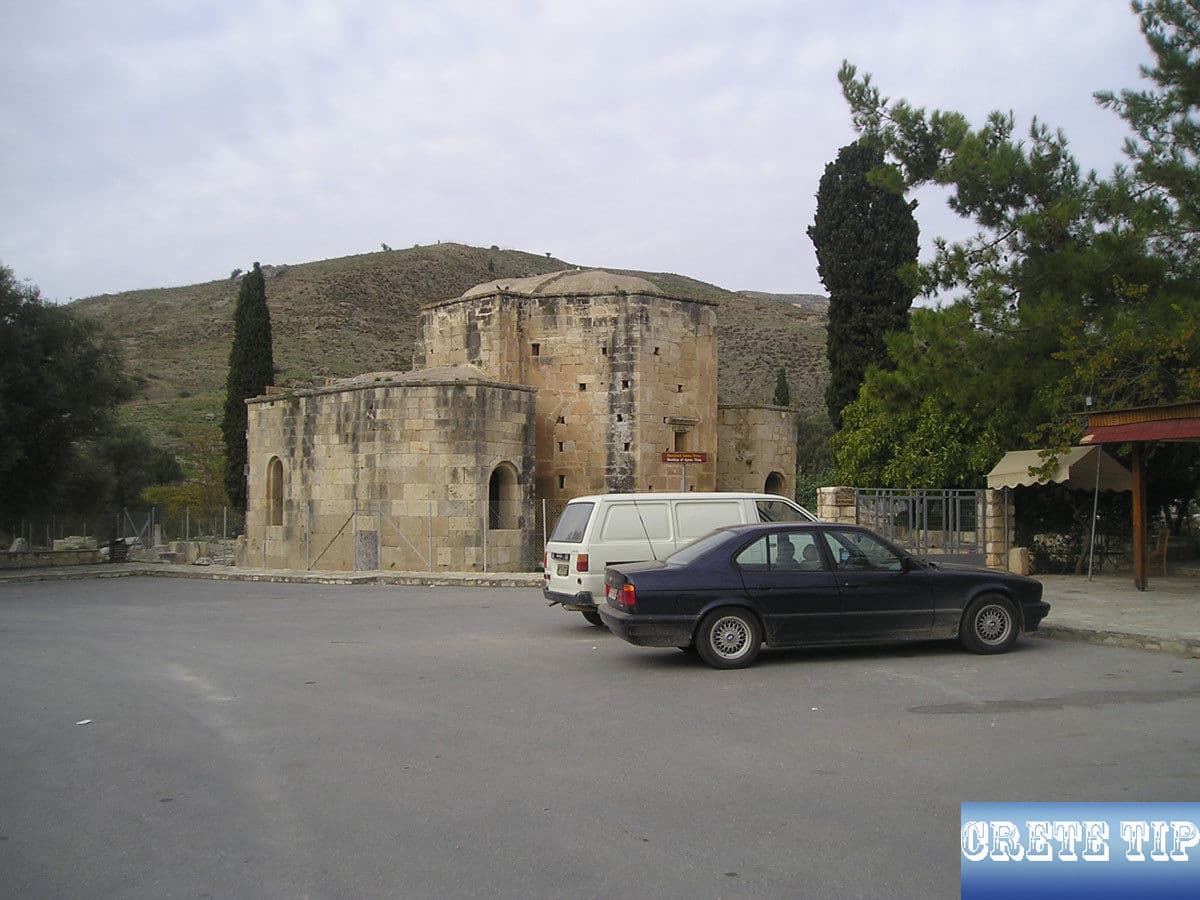
You can get the best impression of the size and former power of the city by visiting the paths south of the main road with the fenced area (go along the turnoff to Patanos and Ledndas and then turn left onto one of the paths). It is a c.1,000 yard (0.91 kilometers) walk to see all major building sites. On the southernmost and about 500 yards (0.46 kilometers) from the fenced site are the impressive remains of the former stadium.
Above the fenced ground, west of the river Mitropolitanos, which is at best to cross over the bridge of the main road, you can reach the old theater. At times when the city still existed, the river ran in a canal under the surface.
From there you can also climb up to the former Acropolis, which gives you an excellent overview of the terrain. Also, the remains of an aqueduct are located in the hills north of the city.
Main Area
Next to the car park there is also a pavilion with a café, with a collection of statuary excavated in the city, showing their high civilization.
Church of Agios Titos
The ruins of the Church of Agios Titos is the most important landmark of the former Gortys and the first to notice for the visitor. This is the only part of the church that has remained intact. When the church was built around the end of the 6th century, it was the largest in Crete and it is the best preserved example of an early Christian church in the entire Aegean.
There is a small altar in the northern side of the nave, but only the foundations of walls and columns with the monogram of the Byzantine Emperor Justinian from the 6th century have survived.
Odeion
Behind the Church of Agios Titos lies the Odeion in the form of a Roman theater with its famous city rights. It was originally destroyed by an earthquake and rebuilt in the 3rd century.
In a back wall of the half-bored auditorium, the famous stone blocks with the city rights were admitted, which were already regarded by the Romans as an important antiquity and are now protected behind bars.
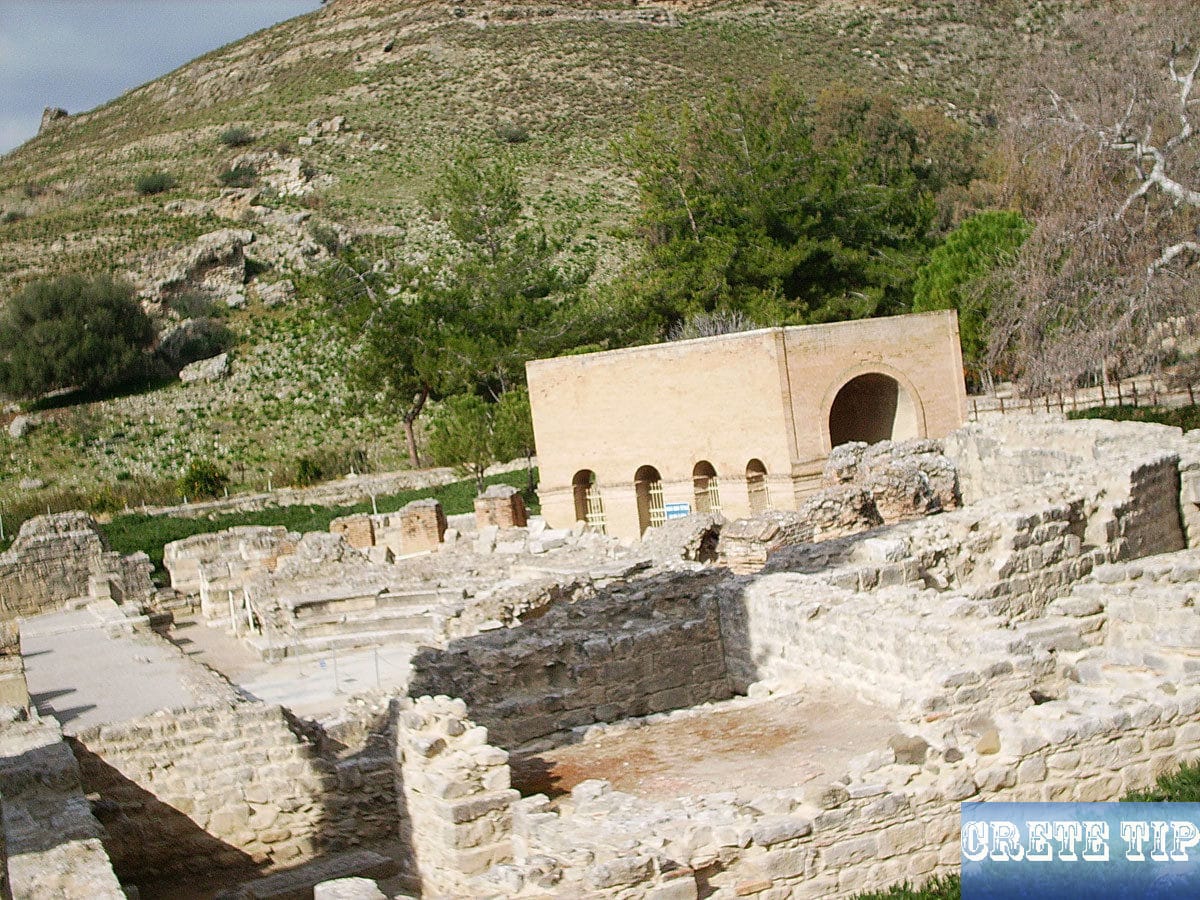
The legal text is engraved in a series of stone tablets and 9 yards (ca. 8 meters) long and 3 yards (2.74 meters) high and dated about 500 BC.
They are actually more practiced procedures than laws, which give a deep insight into the society of the ancient age.
This city law was written in a simple Dorian dialect, from left to right, and then reversed, and the signs were read in a mirror-like manner, so that the eyes could follow the text without further ado.
It is the longest preserved text with ancient Greek inscriptions in Greece, written in the ancient Doric dialect, which the Romans probably could not read at all. Nevertheless, the jurisprudence of the Minoans was already famous and the jurisprudence in Crete was regarded as exemplary in classic times.
There were different rules for the three classes of citizens, serfs and slaves. Thus, e.g. five witnesses needed to convict a citizen of a crime while only one was needed for a slave. For a rape of a citizen, the punishment fine amounted to 100 staters, while for a serf, this amounted to only five staters.
The rules also deal with property and inheritance law, adulteration, divorce, the status of children from mixed marriages between citizens and serfs, and the control of trade.
Evergreen plane
Acropolis
The other parts of Gortys are always accessible without entrance fee, but partly fenced. West of the river, which is crossed over the road bridge, you find the remains of an abandoned, medieval mill and a larger Greek theater, unfortunately in a bad condition. In Roman times, the river passed through an underground canal so that one could go back and forth direct between the areas.
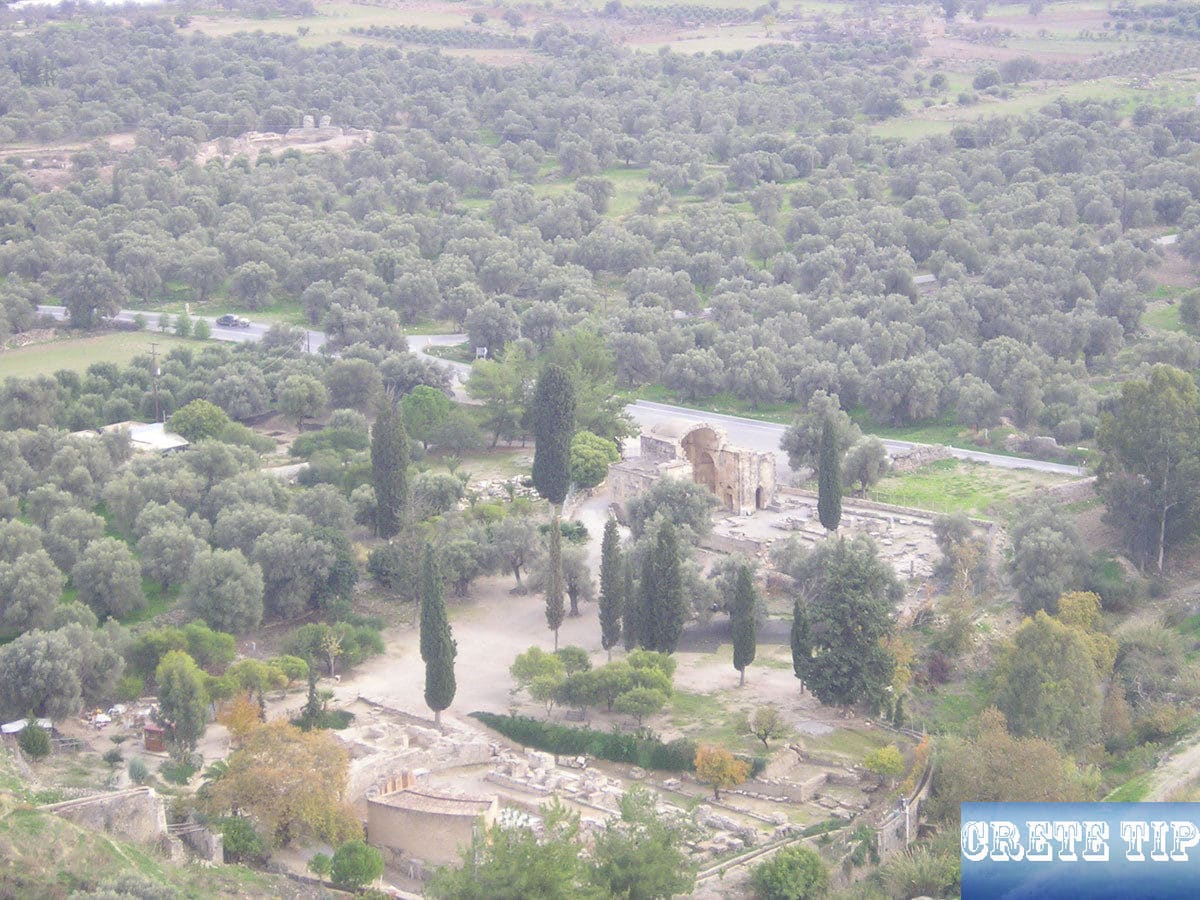
Only a few takes the trouble to ascend to the Acropolis on the hill behind. The best way is to walk along the river. The ruins are quite impressive, surrounded by a Roman defensive wall, still 6 yards (5.49 m) high in some places.
The other remains are from an ancient Greek temple, which was later converted into a church. From the top of the hill you have a good overview of the former Gortys with its excavated areas. You can also see the course of the old aqueduct, which was bringing from the north the drinking water.
Ruins of the Roman city
In the fields south of the main road with the fenced ground are the remains of the old Roman provincial capital, which have been excavated or still visible above the earth.
These stretch from the western end of the village Ayii Dheka to the river Mitropolitanos (then Lethe) and from the hills to the north to the present hamlet of Mitropolis where a Roman basilica with well-preserved mosaic floor (now covered for protection) was excavated.
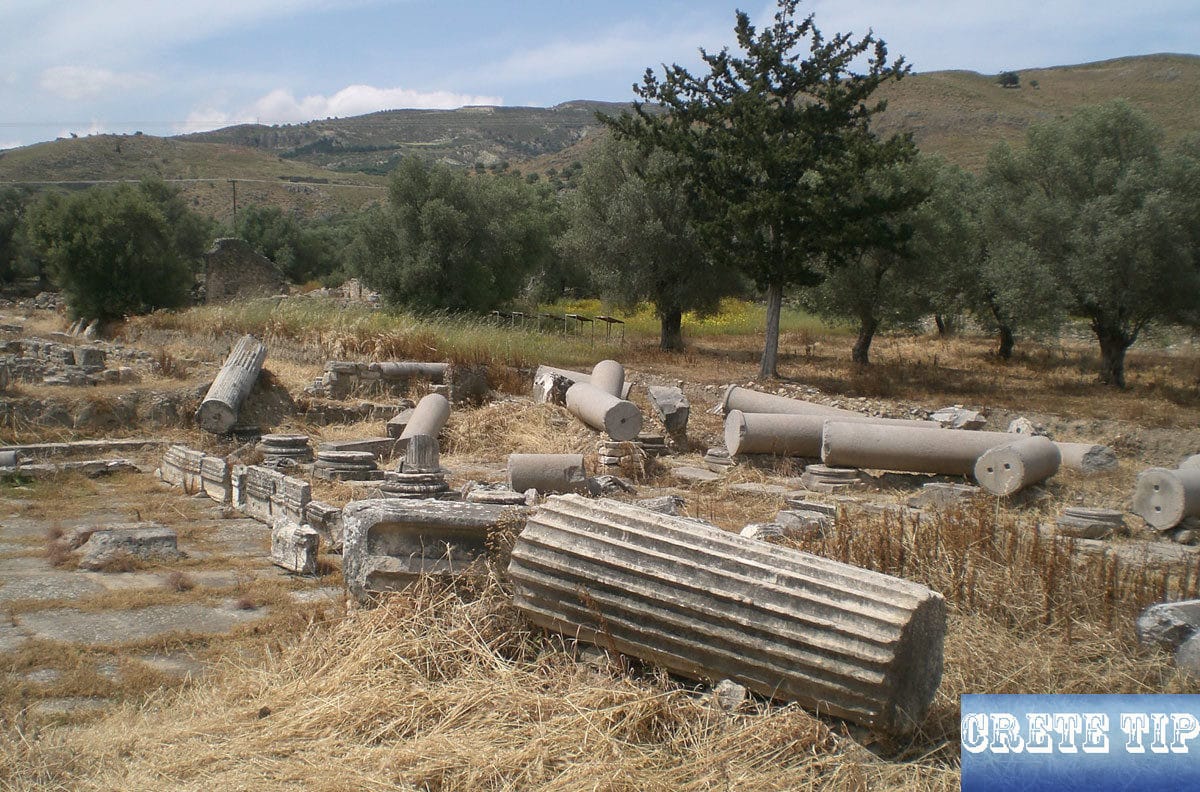
Everywhere in this area are scattered Roman columns and marble around and ruins are visible. The remnants of the old stadium can still be clearly seen in the south. It is a very fantastic feeling to rediscover the lost city on a walk across the well-to-do paths, but it can get quite hot here in summer.
From the seat of the Roman governor of Crete and Cyrene (Cyrenaica) – the praetorium – most of the remains can be seen, which were originally built in the second century AD. But then rebuilt in the 4th century and used as a monastery at the time of the arrival of the Venetians. In the same fenced area is the Nymphaeum with its fountains, where probably the aqueduct has brought the water from today’s region of Zaros.
Many parts of neighboring buildings have also been excavated, which suggests that in the neighborhood among the olive trees there is much more to sleep under the earth.
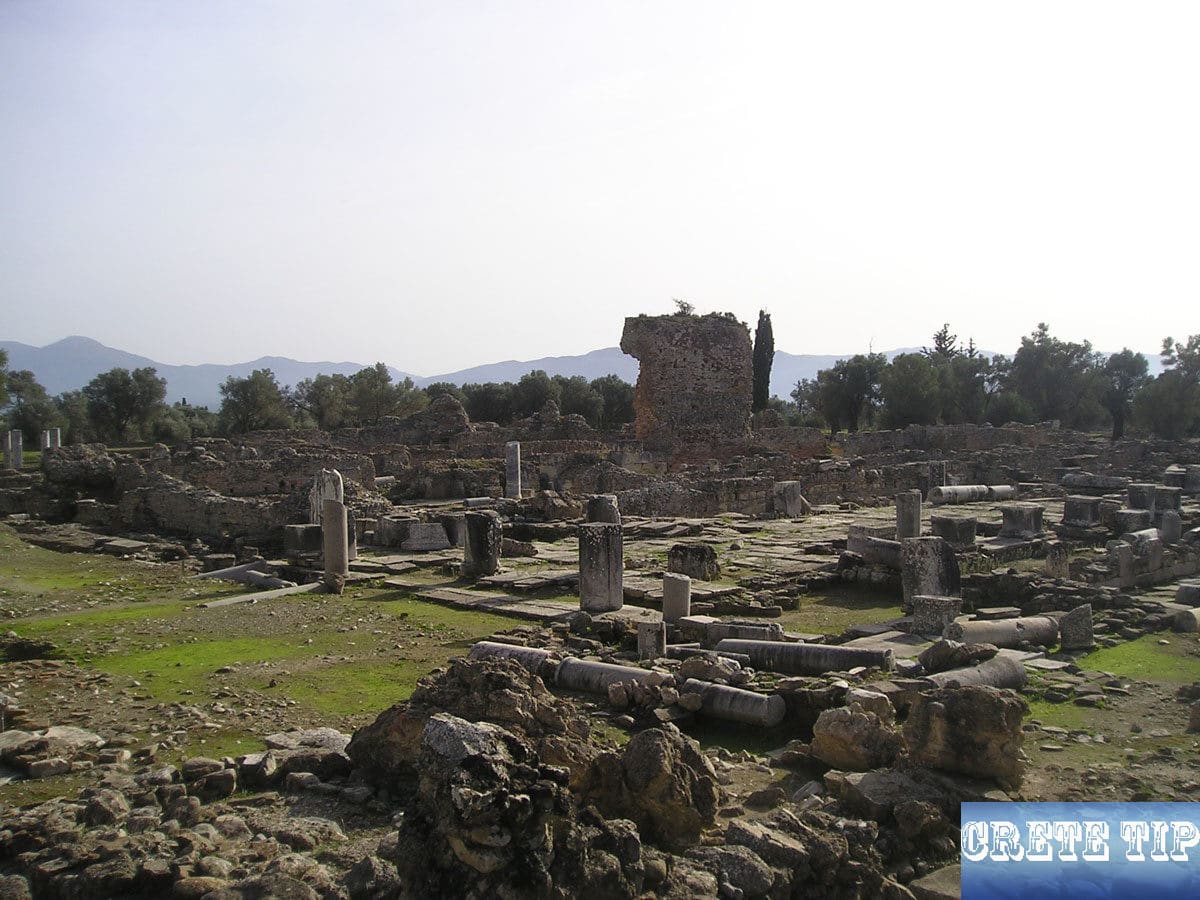
100 yards (ca. 91 m) further west is the Temple of Pythian Apollo with water basin, the most important cult building of a Roman city. The temple was later converted into a church, while the nearby, smaller theater is very well-preserved. Another 50 yards (ca. 46 m) to the north are the remains of the Isis and Serapis temple.
Further to the south there are still baths, an amphitheater and the remains of the stadium can be found.
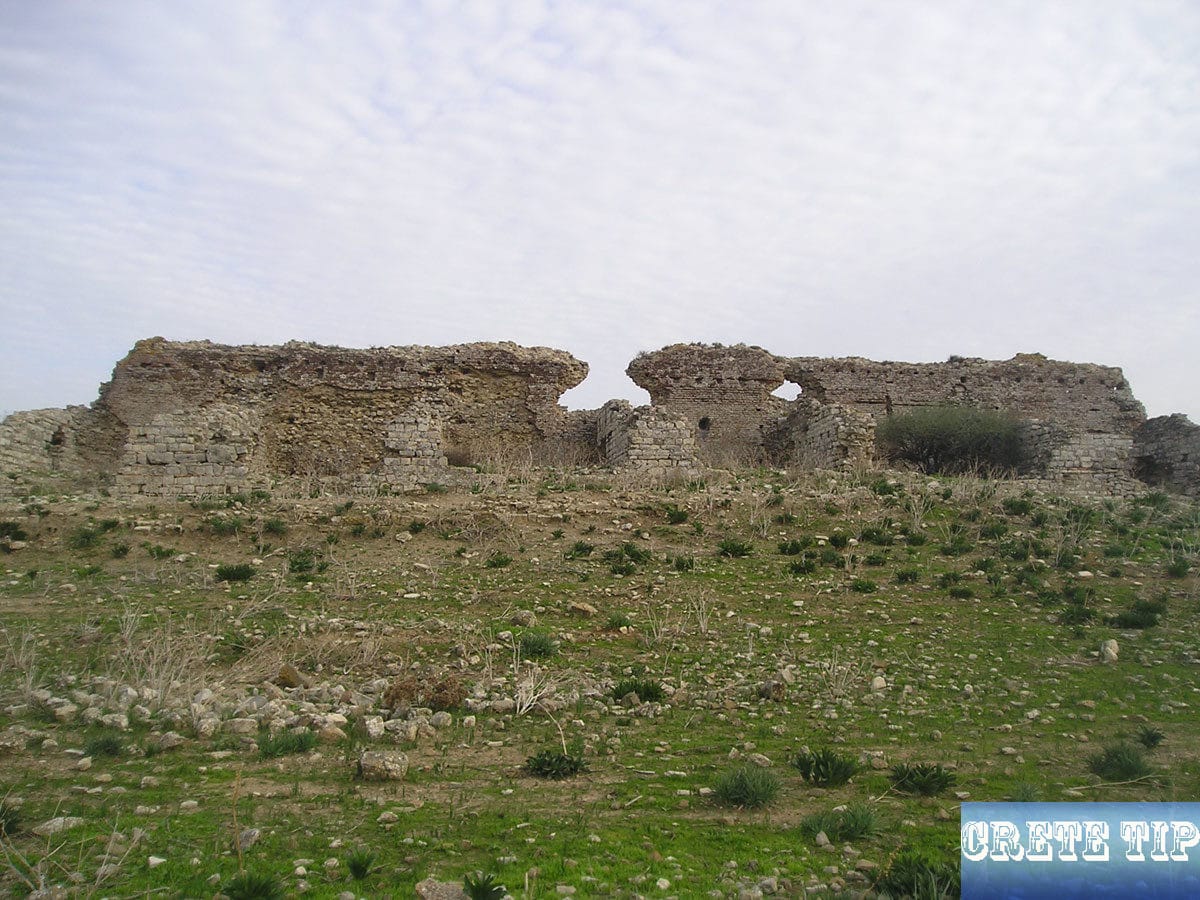
The hike through the ruins also fascinates by the knowledge of how nature has recaptured its lost terrain in the course of time, and the thought that only half a yard below the surface art the remains of the formerly large city, with further statues of gods and emperors, fragments of columns and mosaic flooring.
Video about Gortys
Video of the church of Agios Titos, backside of the Odeion with the ‘Evergreen plane’ and impressions of the ruins of the former Roman provincial capital.
More pictures about Gortys
Directions to Gortys
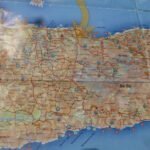
Click here: Directions Gortys.

